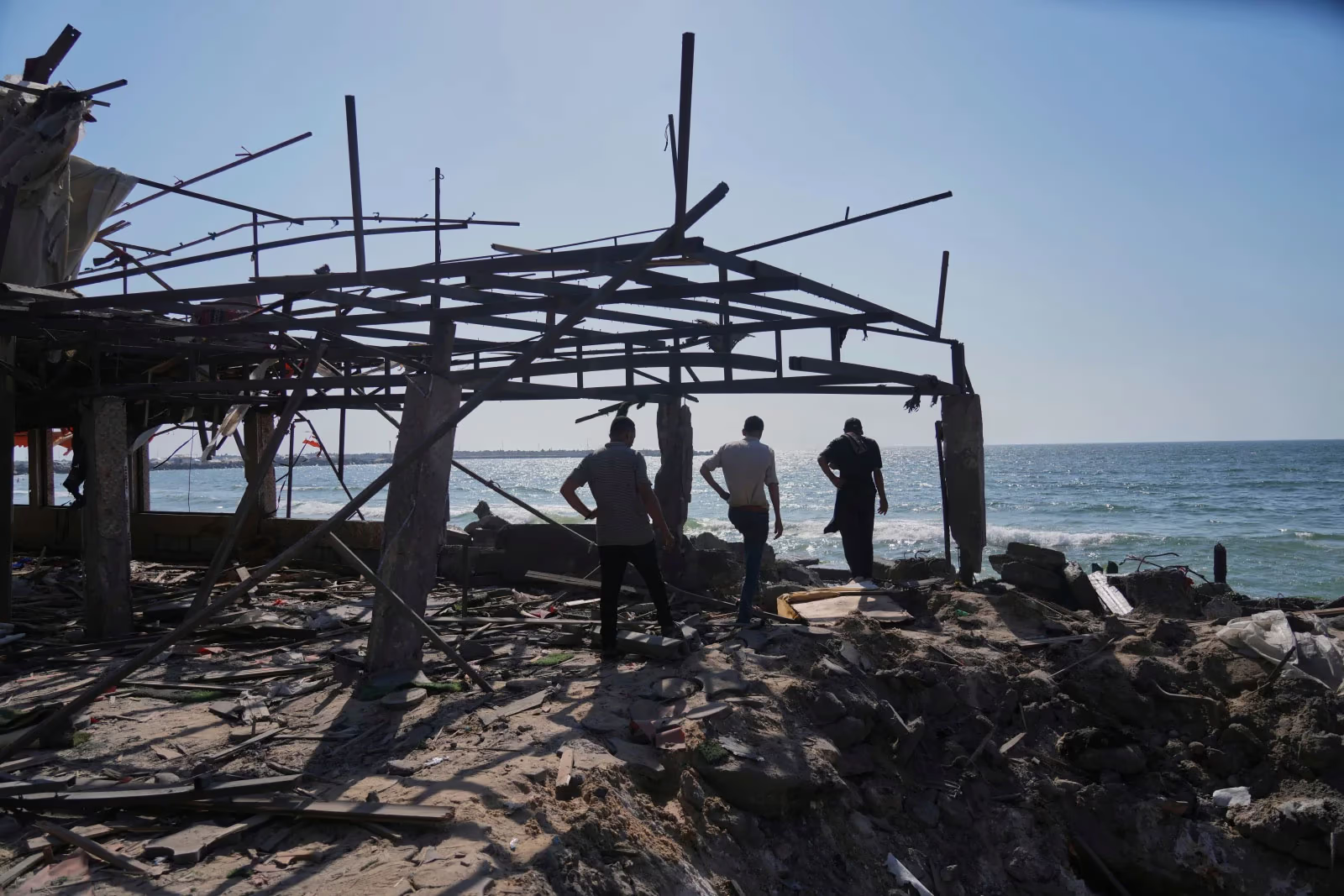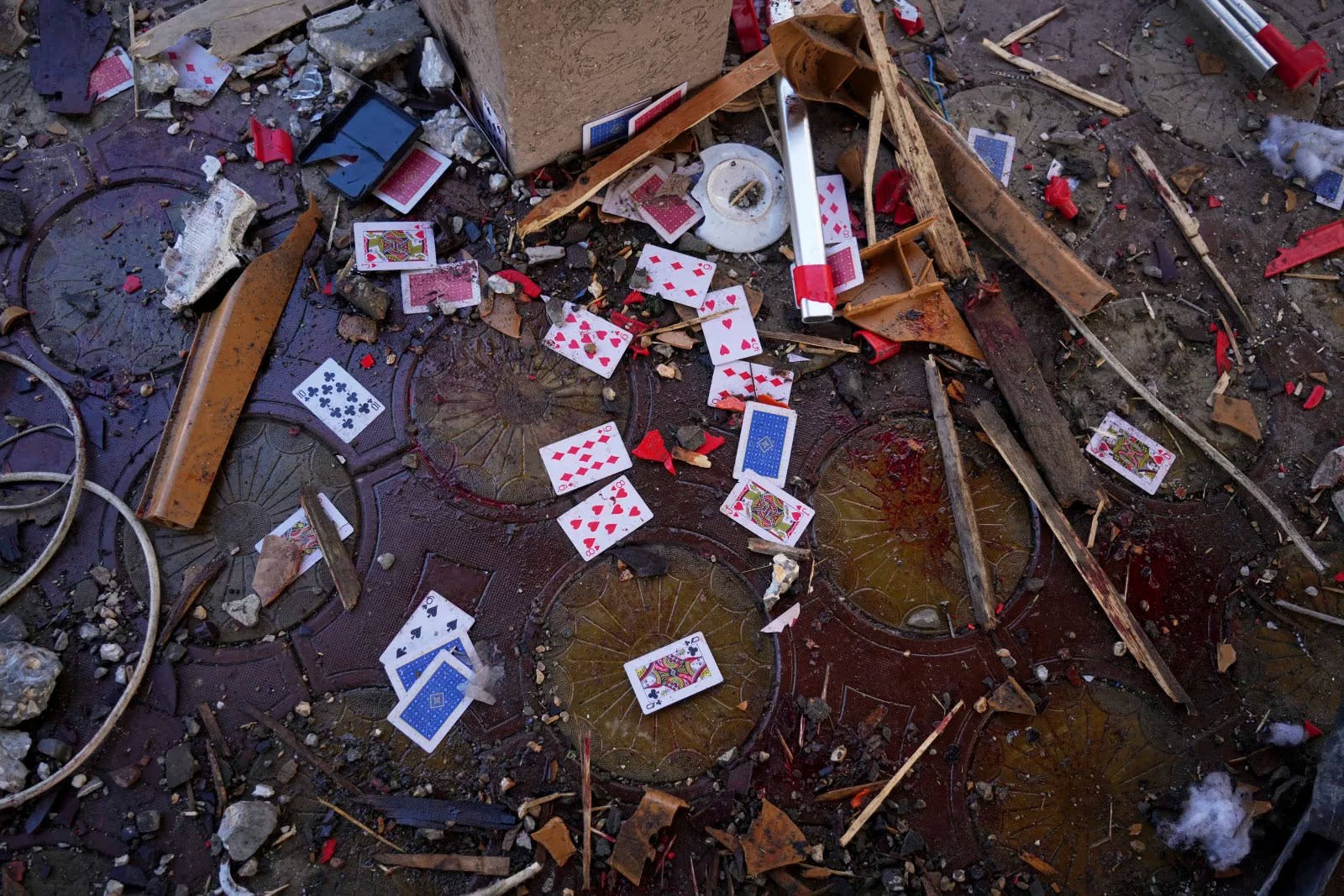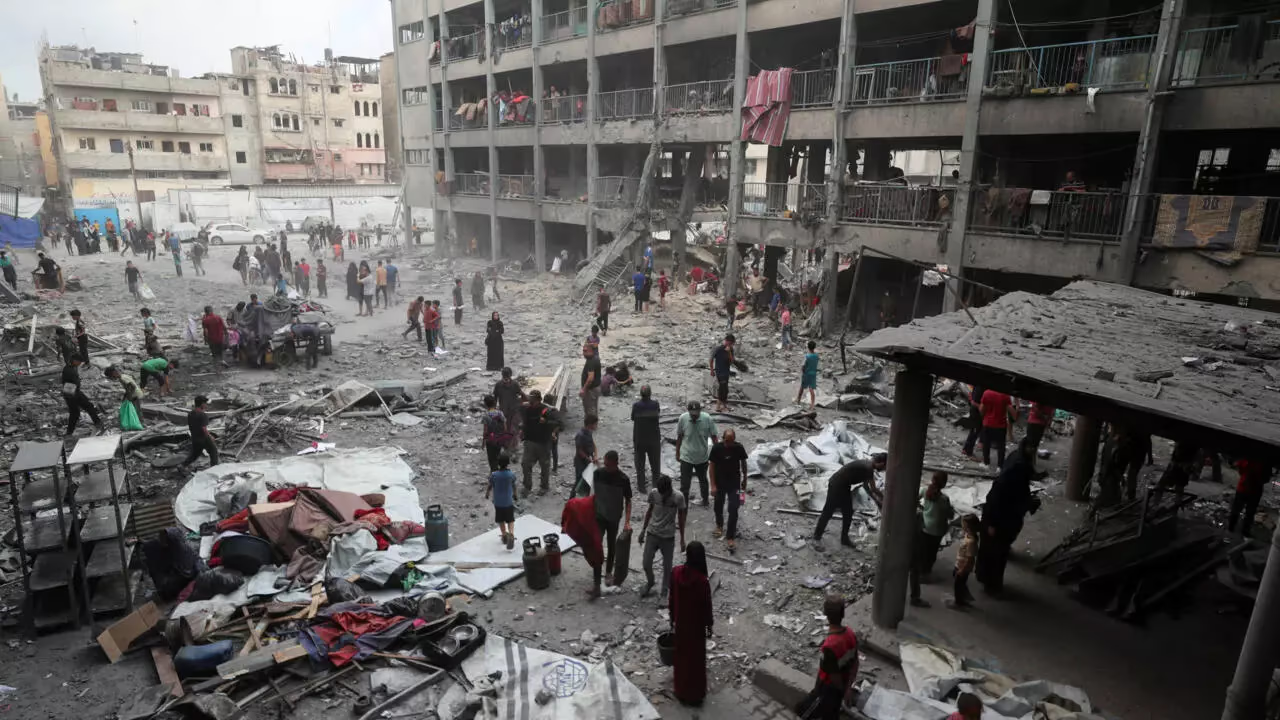On June 30, Israeli forces killed at least 74 people in the Gaza Strip through airstrikes and gunfire, according to eyewitnesses and health officials. Medical sources reported that 30 people were killed at a seaside café and another 23 during gunfire targeting Palestinians attempting to receive humanitarian aid.
One of the airstrikes hit the Al-Baqa café in Gaza while many women and children were present. "Without warning, suddenly, a warplane struck the building—it felt like an earthquake shook it," said Ali Abu Atayla, who was inside at the time. According to Fares Awad, head of the emergency service at the Ministry of Health in northern Gaza, at least 30 people were killed and dozens more seriously wounded.

Café destroyed by Israeli strikes. June 30, 2025.
Two other strikes in Gaza killed 15 people, according to Shifa Hospital, which received the wounded. Another six people died in a strike on a building near the city of Zawaida, according to Al-Aqsa Hospital.
Al-Baqa café was one of the few establishments still operating after 20 months of war. Locals came there to access the internet and charge their phones. Social media footage shows bloodied bodies on the ground and the wounded being carried away in blankets.
Meanwhile, Israeli forces shot and killed 11 people who were trying to collect food in southern Gaza, according to eyewitnesses, hospitals, and Gaza’s Ministry of Health. Nasser Hospital in Khan Younis confirmed receiving the bodies of people killed on their way back from a distribution site affiliated with the Gaza Humanitarian Fund—a program supported by Israel and the United States. More than 500 Palestinians have reportedly died during aid distribution under this program over the past month.
According to medics, the shooting took place about three kilometers from the aid site in Khan Younis—along the road where Palestinians were returning home. Many are forced to walk long distances to reach such points.

An Israeli airstrike near the port area in Gaza City that killed more than 30 people on Monday, June 30, 2025.
One person was also killed near a humanitarian hub in Rafah, and another while waiting for aid near the Netzarim corridor, which divides northern and southern Gaza, according to Al-Awda Hospital. In addition, 10 people were killed near a UN warehouse in the northern part of the enclave, according to emergency services from the Health Ministry.
"We were shelled with artillery," said Yousef Mahmoud Moheymar. He recounted walking with dozens of other Palestinians when he saw Israeli tanks and armored vehicles heading toward them. At first, the soldiers fired warning shots, then began shooting into the crowd.
"They fired at us indiscriminately," he said. Moheymar was shot in the leg, and the man who tried to help him was also wounded. He said he saw Israeli troops detain six people, including three children. "We don’t know if they’re still alive," he added.
The Israeli military said it was reviewing reports about the incidents. Previously, the army had stated that it fires warning shots at individuals who behave suspiciously or approach military positions, including during the distribution of humanitarian aid.
Israel is pushing for the Gaza Humanitarian Foundation (GHF) to replace the current aid distribution system coordinated by the UN and international organizations. Alongside the United States, Israel accuses Hamas of hijacking aid shipments to strengthen its grip on the enclave. The UN denies that aid is being systematically diverted.
The Israeli army said it had recently taken steps to improve the organization of aid delivery — including setting up additional barriers and signage, and opening new access routes to humanitarian centers.
Israel insists it targets only militants and blames Hamas for civilian casualties, claiming the group deliberately operates from residential areas and uses civilians as "human shields."
The Israeli military has intensified its bombardment of Gaza City and the adjacent Jabalia refugee camp. On Sunday and Monday, large-scale evacuation orders were issued for wide areas in the northern part of the enclave.
According to Palestinian accounts, Gaza came under intense bombardment overnight into Monday. The latest wave of attacks was described as a "scorched-earth" campaign, with strikes targeting mostly empty buildings and civilian infrastructure.
"They are destroying everything still standing... the sound of bombing doesn’t stop," said Mohamed Mahdi, a Gaza City resident who left his ruined home on Monday morning.
Fares Awad, a spokesperson for the emergency medical services, said large parts of Gaza City and the Jabalia refugee camp were now inaccessible to medics — rescue teams were unable to reach those trapped under rubble.
The Israeli military stated it was taking numerous steps to warn civilians ahead of operations targeting Hamas command and control centers in northern Gaza.
According to the enclave’s Health Ministry, more than 56,000 Palestinians have been killed since the war began. The ministry does not distinguish between civilians and militants in its figures but emphasizes that more than half of the dead are women and children.
Might Over Right

Heavy Bombardment Follows Calls for Peace
Israel Strikes Gaza as Trump’s Team Pushes a New Ceasefire Plan

Israeli Strikes on a School Sheltering Displaced Families in Gaza Kill at Least 56, Three More Shot Dead in the Enclave’s Center While Waiting for UN Aid
This Happens Almost Every Day

At Least 51 Killed in Khan Younis
Israeli Forces Once Again Open Fire Near Humanitarian Aid Distribution Point

"People Go There Not Knowing If They’ll Come Back Alive."
Israel and the U.S. Have Replaced the UN With Their Own Fund, Distributing Aid Through a Few Sites Marked by Strikes, Stampedes, and Hundreds of Deaths

Israel Consolidates Control Over the West Bank Through Administrative, Demographic, and Military Measures
De Facto Annexation Is Becoming Official Policy

Israeli Strike on Gaza School Kills 33—Army Says Militants Were Hiding in the Building

Israel Launches Airstrike on Jabalia
At Least 48 Dead, Including 22 Children

